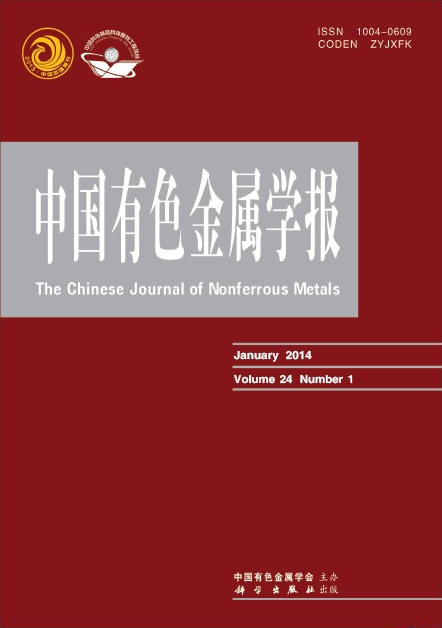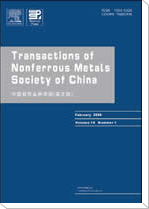(1. 中南大学 粉末冶金国家重点实验室,长沙 410083;2. 株洲中航动力精密铸造有限公司,株洲 412000)
摘 要: 针对当前雀斑判据在合金成分上存在的不足,构建一个基于高温合金成分的雀斑预测模型并对其进行了验证。通过对合金各元素的密度溶质膨胀系数β和密度温度膨胀系数βT的计算,定量分析其在凝固过程中对糊状区液相密度的影响。通过定义一个雀斑形成倾向因子P,量化各个元素对雀斑形成的影响大小。并在此基础上,构建一个虑及合金成分的雀斑预测模型,该模型可以预测不同组分的合金和雀斑形成之间影响规律。3种不同来源的k值(如实验值、二元合金相图和Thermo-Calc计算的平衡分配系数)被代入该模型计算,验证哪种k值能更好地预测雀斑形成。结果表明:基于二元合金相图的k值,预测结果与实验结果拟合较差,其线性拟合优度R2最大时仅为0.4;而采用实验和Thermo-Calc的k值,拟合较好,v2最大值分别达到0.87和0.95。最后,计算SX系列合金的P值,结果显示:单位含量的Hf元素对雀斑有最强的抑制作用,Ta元素的抑制作用次之;Al、Re元素对雀斑有较强的促进作用,W元素的促进作用次之。
关键字: 雀斑;高温合金;成分;雀斑形成倾向因子;平衡分配系数;预测模型
(1. State Key Laboratory of Powder Metallurgy, Central South University, Changsha 410083, China;
2. Zhuzhou AVIC Power Investment Casting Co., Ltd., Zhuzhou 412000, China)
Abstract:Aiming at the currently shortage of the freckle criterion in the alloy constituents, a constituent-based freckle predictor for nickel-base suppalloy was modeled and verified by the experiment data. The effect of each element on the liquid density was quantitatively analyzed by calculating the solutal expansion coefficient β and the thermal expansion coefficient βT of each element. The impact of each element was quantified by defining a freckle formation tendency factor. Based on calculations of these variables, a constituent-based freckle predictor was modeled, which can predict the influence between different alloy constituents and freckle formation. Three different equilibrium distribution coefficients k were taken into this model and verified which was the best k value to predict freckle. The results show that the fitting of the number of freckles using the k value based on binary phase diagram is poor, and the linear goodness-of-fit (R2) maximum is only 0.4; while using the k values of experiment and Thermo-Calc the fitting is good, and the maximum R2 reach 0.87 and 0.95, respectively. Finally, the P values were calculated for the SX alloys, and the results show that the hafnium has the strongest influence on freckle prevention, tantalum also has beneficial effects though not as pronounced as hafnium; aluminum and rhenium have the stronger promoting effect on freckles, and tungsten is the second.
Key words: freckle; superalloy; constituent; freckle formation tendency factor; equilibrium distribution coefficient; prediction model


